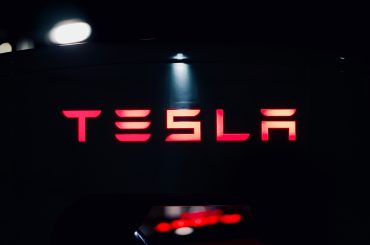Contents
- 1 Introduction to Cybertruck Production: A Revolution on Wheels
- 2 A Tesla Trailblazer
- 3 Buzzworthy Anticipation: A Timeline of Twists and Turns
- 4 The Thrill of the Unknown – CyberTruck Production
- 5 CyberTruck Production Processes and Materials: Forging a Stainless Steel Beast
- 6 Automation and Robotics: Where Humans and Machines Dance
- 7 Supply Chain Dynamics: Weaving a Global Web for the Cybertruck
- 8 CyberTruck Production Challenges and Solutions: From Glitches to Glory
- 9 Conclusion: The CyberTruck Production Revolution Rolls On
- 10 A Glimpse of the Future
- 11 FAQs: Your Cybertruck Curiosity Quenched
Introduction to Cybertruck Production: A Revolution on Wheels
A Tesla Trailblazer
The Tesla Cybertruck is not just another pickup truck. It is a revolution on four wheels, an electric car reinvented. This significance ripples through not only Tesla’s model lineup, but also the electric-vehicle (EV) market as a whole.
Tesla’s Ace in the Hole – CyberTruck Production
For Tesla, the Cybertruck unlocks a lucrative new market segment: full-size electric pickups. The potential in this still-unrealized area represents a huge growth opportunity, one that could help push Tesla even further ahead of the pack. The Cybertruck’s unique design and performance is a challenge to Ford’s F-150 Lightning, Rivian’s R1T, et all. It promises something genuinely disruptive.

Going Beyond the Hype: Rewriting the EV Story
The Cybertruck has more impact than just the bottom line for Tesla. Its unusual shape defies the conventions of truck aesthetics, breaking new ground as to what an EV can be like. With an impressive range, towing capability, and off-road chops, the F-150 Lightning could help boost EV adoption even faster toward a cleaner tomorrow.
Buzzworthy Anticipation: A Timeline of Twists and Turns
The story of the Cybertruck’s production has been filled with excitement and intrigue. Introduced in 2019, this unique design reverberated throughout the automotive community. As original production estimates for the end of this year have been delayed first to next year, then again to late 2023.
The Thrill of the Unknown – CyberTruck Production
Each delay only added to the public’s anticipation. Snippets of news and leaked photos continued to fuel speculation. Everyone wanted to see the revolutionary truck roll off the production line for real. Finally, in October 2023, Tesla CEO ElonMusk announced that the first deliveries would be November 30th. The news sent a shock reverberating through the automotive world.

Beyond the Hype: Uncovering the CyberTruck Production Process
And now, as the first Cybertrucks take to the streets, it’s time for us to descend into a detailed account of its incredible production odyssey. So let’s take a closer look at the tricky dance of Gigafactories and manufacturing centers, the high tech involved and the overwhelming scale on which one must operate in order to keep up with demand for this electric beast.
CyberTruck Production Processes and Materials: Forging a Stainless Steel Beast
The Cybertruck’s exoskeleton is not only an aesthetic choice, it’s also testament to Tesla’s innovative manufacturing processes. Buckle your seat belt Two times the mannequin We’re going to peel it back layer by layer and take a look at how this electric titan is made.
Giga Press and the Art of Megaforming: Bending the Rules
Tesla’s secret weapon? The Giga Press. This big machine employs a cold-stamping process to shape the Cybertruck’s exterior panels from single sheets of ice-hard, low-temperature rolled stainless steel. Think of a huge metal origami artist. He deftly folds and mindfully shapes perfectly formed pieces. The result? A one-piece, dent resistant body that does away with welding and traditional painting.

Strength, sustainability, and a dose of swagger
Cold-rolled stainless steel is not limited to kitchen appliances. This strong material is resistant to scratches, dings and even light collisions. Corrosion resistance is one thing it doesn’t need rustproofing for. Its natural sheen gives the Cybertruck a unique, almost futuristic glow. This is a departure from the age-old world of trucks with their slathered-on paint, and it’s at once an affirmation of durability and sustainability.
Redefining the CyberTruck Production Landscape with a Tesla Touch
What makes the Cybertruck different is its material and production choices. The Giga Press technology simplifies and reduces the amount of waste, while cold-rolled stainless steel eliminates the need for hazardous paints and coatings. It is a glimpse of a future where sustainability and performance complement each other naturally, where innovation overturns the familiar world, breaking new frontiers.
Automation and Robotics: Where Humans and Machines Dance
The Cybertruck’s production line is a symphony of mechanized precision. However, lest you picture a scene from “Terminator,” bear in mind that automation and robotics are partners, not substitutes, in this high-tech ballet.
Precision Partners: Robot Tireless Craftsmen
Think of a group of tireless workers never wrong, welding, assembling and inspecting every part and piece of the Cybertruck. That’s the power of high-end robotics. Robots are used from high-speed laser cutters shaping the stainless steel panels to robotic arms wielding welding torches with stunning accuracy, all doing tedious work that requires patience and repeated motions. They guarantee quality which is otherwise difficult to control without incurring additional costs. They also minimize human error, the product of fatigue or lack of concentration.
Speed, Consistency and Globalization: Amplifying Efficiency
But automation isn’t just about substituting for people; it is also about enhancing efficiency. While traditional assembly lines can only dream of this level of efficiency, Tesla’s robots are running day and night producing Cybertrucks. This works out to quicker deliveries, reduced wait times and a competitive edge in the world EV market.
The Human Touch Orchestrating the Machine Symphony – CyberTruck Production
However, amidst the whirring robots and automated processes, one crucial element remains: the human touch. Under the watchful eye of these highly skilled technicians, the robots tune their performance and each Cybertruck emerges a perfect work of art. It is a joint effort in which the wisdom of human-spirit and the might of automation combine to create a car that is at once up-to-date and meticulously produced.
Supply Chain Dynamics: Weaving a Global Web for the Cybertruck
On the road to becoming a roaring beast, the Cybertruck isn’t fighting alone. It’s a sophisticated ballet waltzed on the international stage, with the production line consuming every step of the carefully choreographed supply chain.
A Tangled Web: Tracing the Supply Chain of the Cybertruck
Now imagine a map speckled with pins marking mines, factories and assembly lines scattered around the globe. But every pin is a little gear head, driving everything from the ultra-hard cold rolled stainless steel to the high tech battery cells that will power up Cybertruck. Components flow along a very precise dance of logistics and timing.
Partnering for Power: The Main Characters in the Performance Puzzle
Tesla doesn’t go it alone. Strategic alliances with industry titans such as LG Energy Solution (LGES) for batteries and CATL for battery materials ensure a steady supply of vital parts. The truck’s bed is provided by a local supplier like Martinrea Automotive in Canada and smaller startups with new technologies like Maxwell Technologies supply innovative materials for the batteries, such as dry electrodes.
Weathering the Storm: How to Minimize Supply Chain Disruptions
The global supply chain is a delicate ecology, vulnerable to pandemics, chip shortages or geopolitical troubles. But these difficulties are no strangers to Tesla. It is trying to guard against disruption by diversifying its supplier base, investing in vertical integration like manufacturing its own battery cells, and using advanced data analytics to anticipate and work around disturbances.
CyberTruck Production Challenges and Solutions: From Glitches to Glory
Making a Cybertruck isn’t easy. The early phases of production presented many hurdles, but Tesla-undaunted and ever the innovator-adapted its strategies with agility.
Hiccups or Hurdles? The Roadblocks on the Cybertruck Journey
The early estimate of late 2021 turned out to be rosy. Problems like obtaining large quantities of cold-rolled stainless steel, working out the Giga Press technology and fine tuning the intricate assembly process caused delays. The critics pounced, but Tesla kept the focus on eliminating these obstacles.
From sketchboard to real life: Those solutions of Tesla in action
In order to overcome this stainless steel shortage, Tesla managed to find new suppliers and even considered alternative materials like high-strength aluminum. The Giga Press was subjected to various improvements, making it more precise and efficient. The assembly process was simplified as much as possible, making use of automation and robotics where possible. Using perseverance and adaptability, Tesla turned initial obstacles into stepping-stones.
Overcoming Industry Challenges The Resilience of the Pack
The production journey of the Cybertruck is a testament to the determination of the Tesla team. They overcame such industry-wide obstacles as the global chip shortage through self-developing solutions and relying on strategic partners. The production line was hardly affected by the disruptions wrought by the COVID-19 pandemic, as it limped along but moved at a reduced pace.
The last chapter will focus on the future of Cybertruck’s production. We’ll consider its significance for the EV world, as well as some major breakthroughs it could bring. Hold on, Cybertruck is just warming up for revolution.
Conclusion: The CyberTruck Production Revolution Rolls On
The Cybertruck is more than just a pickup truck. It’s a revolution on wheels from Tesla. With its revolutionary design, innovative manufacturing processes, and commitment to sustainability it is changing the rules of the game. Its electric vehicles are not only powerful but green.
A Legacy in the Making
There’s more to the Cybertruck than just its impressive specs and space-age looks. For Tesla, it’s a watershed point on the road of pushing electric vehicle design and production to new heights. It will reverberate throughout the industry, promoting innovation and speeding up electric vehicle adoption.
A Glimpse of the Future
The successful production of the Cybertruck points to a bright future for electric vehicles. In fact, its use of automation, advanced materials, and sustainable practices could become a model for the entire industry. Think of a future in which every electric vehicle is as performance-oriented, durable and environmentally friendly as the Cybertruck itself.
The Road Ahead – CyberTruck Production
While there were some problems getting started, Tesla seems to have finally hurdled the production barrier and begun shipping the first wave of Cybertrucks. As production increases and improvements are made, the Cybertruck’s influence will be more apparent. It promises to transform the landscape of electric mobility, and it’s worth watching.
FAQs: Your Cybertruck Curiosity Quenched
What are the most important challenges facing Cybertruck production?
Initial hurdles included sourcing bloodless-rolled chrome steel, perfecting the Giga Press generation, and optimizing the complex meeting process. These demanding situations caused manufacturing delays, however Tesla has addressed them via strategic partnerships, technological advancements, and iterative enhancements.
How is Tesla mitigating deliver chain disruptions?
Tesla has various its dealer base, invested in vertical integration for vital components like batteries, and utilizes advanced data analytics to are expecting and adapt to disruptions. This multi-pronged method targets to keep the Cybertruck manufacturing line operational amidst global challenges.
What is the future of Cybertruck production?
As production scales up and refinements are made, the Cybertruck’s impact will become even more obvious. It could set a new wellknown for electric vehicle layout, production, and sustainability. Expect to see extended performance, progressed overall performance, and probably even new Cybertruck variants in the future.
How will the Cybertruck effect the electrical vehicle market?
The Cybertruck’s bold layout, astounding abilties, and progressive manufacturing techniques should inspire other producers to push the limits of electric car era. It may also boost up the mainstream adoption of EVs by means of supplying a compelling alternative to traditional fuel-powered vans.






